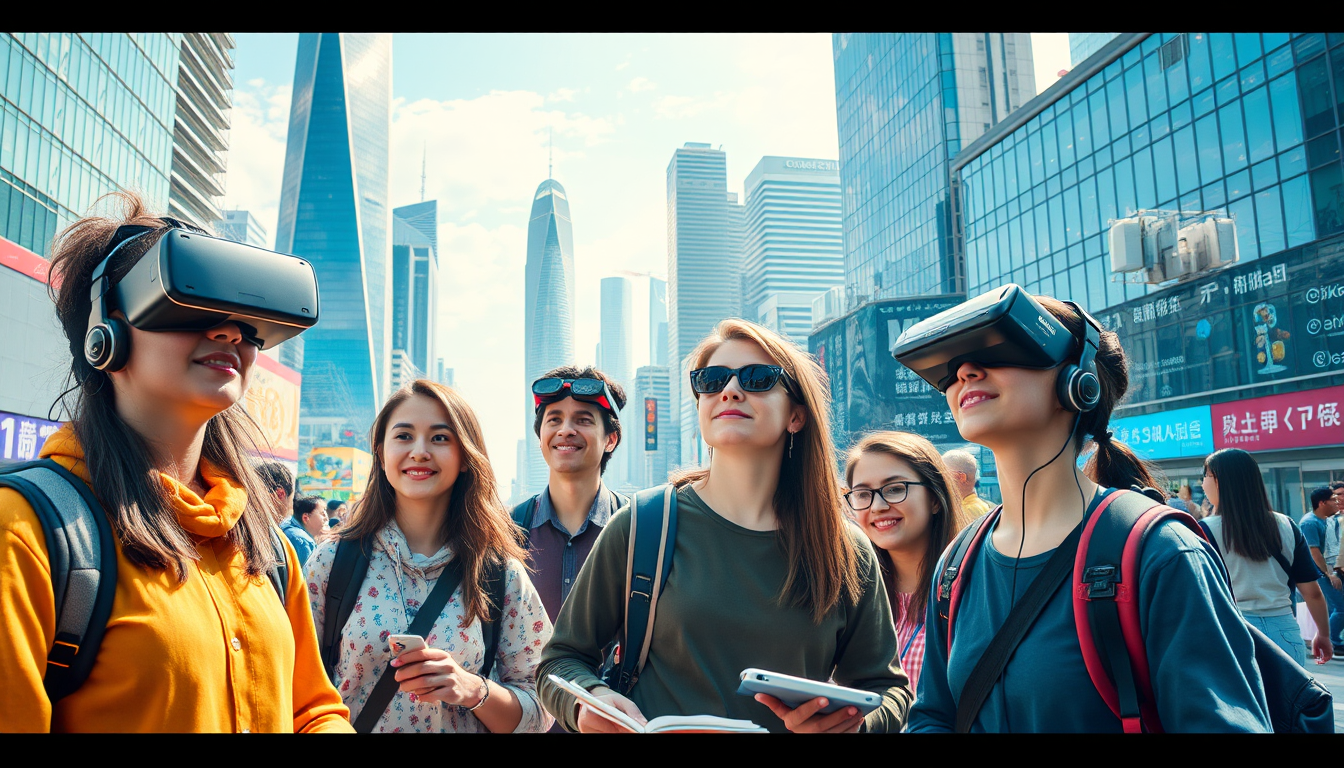
The world of study abroad has evolved tremendously, spurred by rapid advances in technology. From the logistics of planning and applying to enhancing the in-country experience, technology is shaping nearly every facet of studying abroad in ways unimaginable just a few decades ago. Today’s students are more globally connected and better equipped to explore international learning opportunities, bridging cultural gaps and forming lifelong connections without as many of the traditional challenges. In this post, we’ll delve into how technology is reshaping the study abroad landscape—from preparation to in-country immersion and beyond.
1. Streamlining the Application and Preparation Process
- Virtual Campus Tours and Online Webinars: Gone are the days when students had to rely on brochures and word-of-mouth. Now, most universities offer virtual campus tours, allowing prospective students to explore campuses remotely. Many schools also host webinars with current students and staff to answer questions and provide insights into programs.
- Smart Applications and AI-Powered Tools: Technology has streamlined the application process with online platforms like CommonApp or UCAS. In addition, AI-powered tools can suggest programs based on students’ academic records, interests, and career aspirations, taking some guesswork out of the search for the right fit.
- Digital Preparation Courses: Some programs require pre-departure courses that teach cultural etiquette, local language basics, and travel skills. Platforms like Coursera and edX now offer free or low-cost courses on local languages and cultures, preparing students for a smoother transition.
2. Enhancing Language Learning and Cross-Cultural Communication
- Language Apps and Immersive Tools: Apps like Duolingo, Babbel, and Rosetta Stone have changed the way students learn languages. Many now offer “gamified” language learning experiences that make picking up vocabulary and grammar engaging. Some even use AI to customize the learning journey.
- AI-Powered Translation Tools: Language barriers can be intimidating, but translation apps like Google Translate have come a long way. Today’s apps can provide real-time translation with impressive accuracy, helping students bridge language gaps faster and more effectively. Plus, live conversation tools allow students to engage with locals confidently.
- Social Media and Messaging Apps: Platforms like WhatsApp, WeChat, and Instagram allow students to stay connected with their host families and friends, making the cultural adaptation process smoother. They can ask questions, share moments, and seek support from new connections around the world.
3. In-Country Navigation and Everyday Assistance
- GPS and Map Services: Google Maps, Citymapper, and other navigation apps are lifesavers for study abroad students. They help students navigate new cities and even suggest local spots to explore. Some apps even offer public transit information, making it easy to understand local transportation networks.
- Food and Payment Apps: Food delivery services like UberEats and DoorDash, and mobile payment options like Apple Pay, Alipay, or Venmo, have made international life much more accessible. For students studying in non-English-speaking countries, these apps can bridge the gap when ordering food or making payments.
- Personal Safety and Translation Devices: Safety apps like bSafe or Noonlight offer peace of mind, especially for those new to a city or country. These apps can notify friends in case of emergency or even locate local authorities when needed. Additionally, wearable translation devices like the Pocketalk can provide offline translation in real-time, which is particularly helpful in areas with limited internet access.
4. Academic Support and Remote Learning
- Learning Management Systems (LMS): Platforms like Canvas, Blackboard, and Moodle are widely used by universities worldwide. They give students easy access to coursework, assignments, and grades, which can be invaluable for managing studies abroad, especially if they’re taking online classes from their home institution alongside local coursework.
- Virtual Study Groups and Tutoring: With video conferencing tools like Zoom or Google Meet, students can collaborate with classmates on assignments or study together. Many universities now also offer virtual tutoring services, allowing students to seek academic help from home or abroad.
- Online Libraries and Research Tools: Access to resources like JSTOR, Google Scholar, and university databases enables students to continue their research abroad. Remote access to libraries allows them to study without being held back by their location, supporting their academic success regardless of where they are.
5. Social Connection and Community Building
- Online Orientation Programs: Many universities now offer virtual orientations to connect students before they even arrive. This helps them build a sense of community and make friends who might be on similar journeys. Pre-departure chats also help students feel less isolated when they first arrive.
- Social Media Groups and Expat Communities: Platforms like Facebook, Meetup, and specialized expat forums allow students to connect with others who have traveled the same path. Many students join local expat communities, where they can share their experiences and seek advice from fellow students.
- Digital Networking Events: Online alumni events or international student networking events hosted by universities allow students to expand their connections globally. LinkedIn also offers opportunities to connect with other students or professionals in their field, which could lead to future career opportunities abroad.
6. Cultural Immersion through Virtual Reality (VR) and Augmented Reality (AR)
- Virtual Reality Tours of Local Sites: Virtual Reality technology now allows students to experience local sites from their dorm room or classroom. Before even visiting a country, students can "walk through" museums, historical landmarks, and cultural sites using VR headsets. This provides background knowledge that enhances their appreciation when they visit in person.
- Augmented Reality Cultural Apps: AR can overlay historical or cultural facts onto real-world environments. For instance, using AR apps, students can walk through ancient ruins or art galleries, pointing their device at objects to read historical details and descriptions. This allows for a deeper understanding of the local history and culture.
7. Staying Connected with Family and Friends Back Home
- Video Calling and Messaging Apps: With tools like Skype, FaceTime, and Zoom, it’s easier than ever for students to stay connected with family and friends. They can share their experiences in real-time, whether it’s video calling from a landmark or sending pictures of their new city.
- Social Media Storytelling: Platforms like Instagram, Snapchat, and TikTok allow students to document their travels and keep friends and family updated. By sharing short stories or daily vlogs, students can stay close to loved ones and even reflect on their journeys.
- Time Zone Management Apps: Time zone apps like Time Buddy and World Clock allow students to manage the time differences between their home and host countries. This is helpful not only for staying in touch with family but also for students juggling online classes back home.
8. Career Advancement and Skill Development
- Online Courses and Certifications: Students can take additional courses from platforms like Udacity, Skillshare, and Coursera while abroad to build their skills. These online certifications can enhance their resumes and make them more competitive in the global job market.
- Global Internship Platforms: Technology has also made remote internships possible, and some students studying abroad participate in virtual internships to gain international experience. Platforms like Internships.com, LinkedIn, and Global Experiences have simplified the process, helping students find opportunities that match their career aspirations.
- Digital Portfolios and Online Networking: Building a digital portfolio through platforms like LinkedIn or Behance allows students to showcase their experiences, skills, and projects. Networking with professionals abroad gives them a valuable edge when seeking global career opportunities after graduation.
Conclusion
The synergy between technology and studying abroad has unlocked opportunities for students to explore new cultures, languages, and career paths with greater ease and efficiency. Students are now more connected and better prepared, equipped with tools that enhance safety, academic performance, social integration, and career readiness. While traditional face-to-face interactions and cultural immersion remain irreplaceable, technology has undeniably broadened and enriched the overall study abroad experience, making the world more accessible than ever for today’s global learners.




